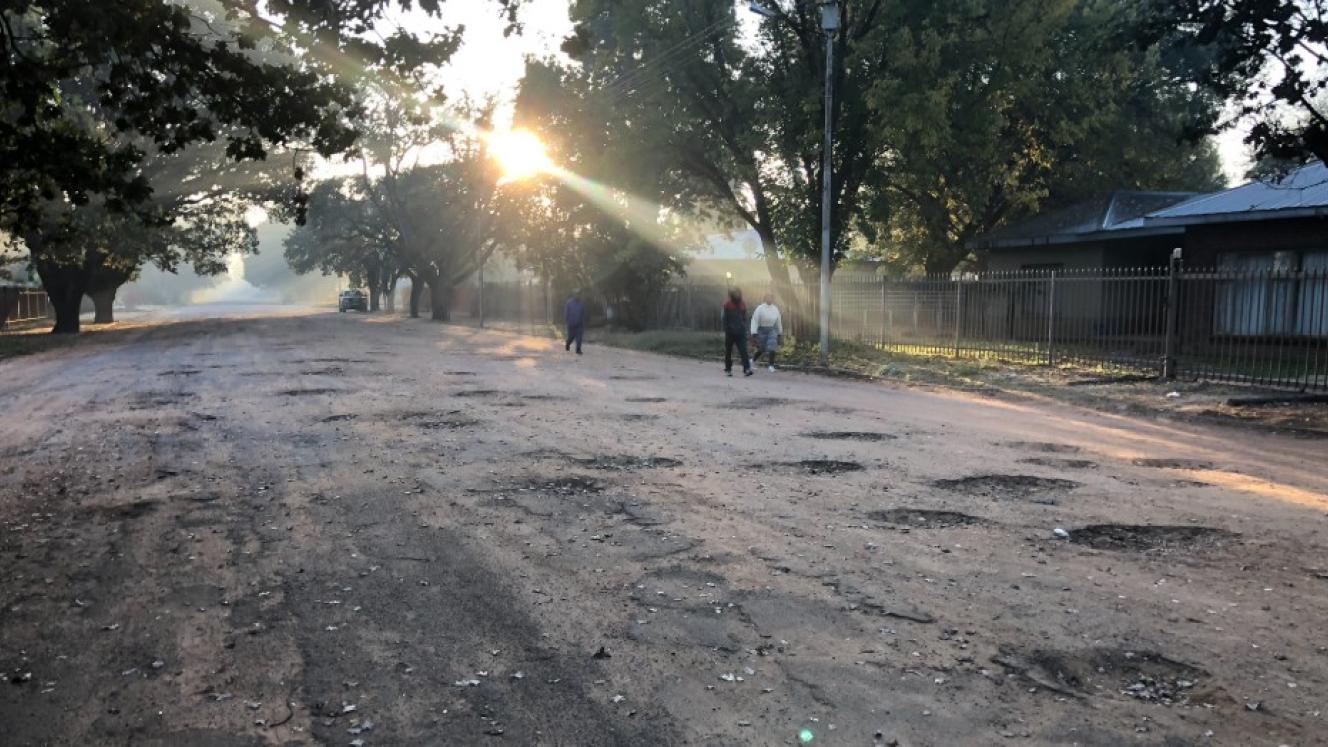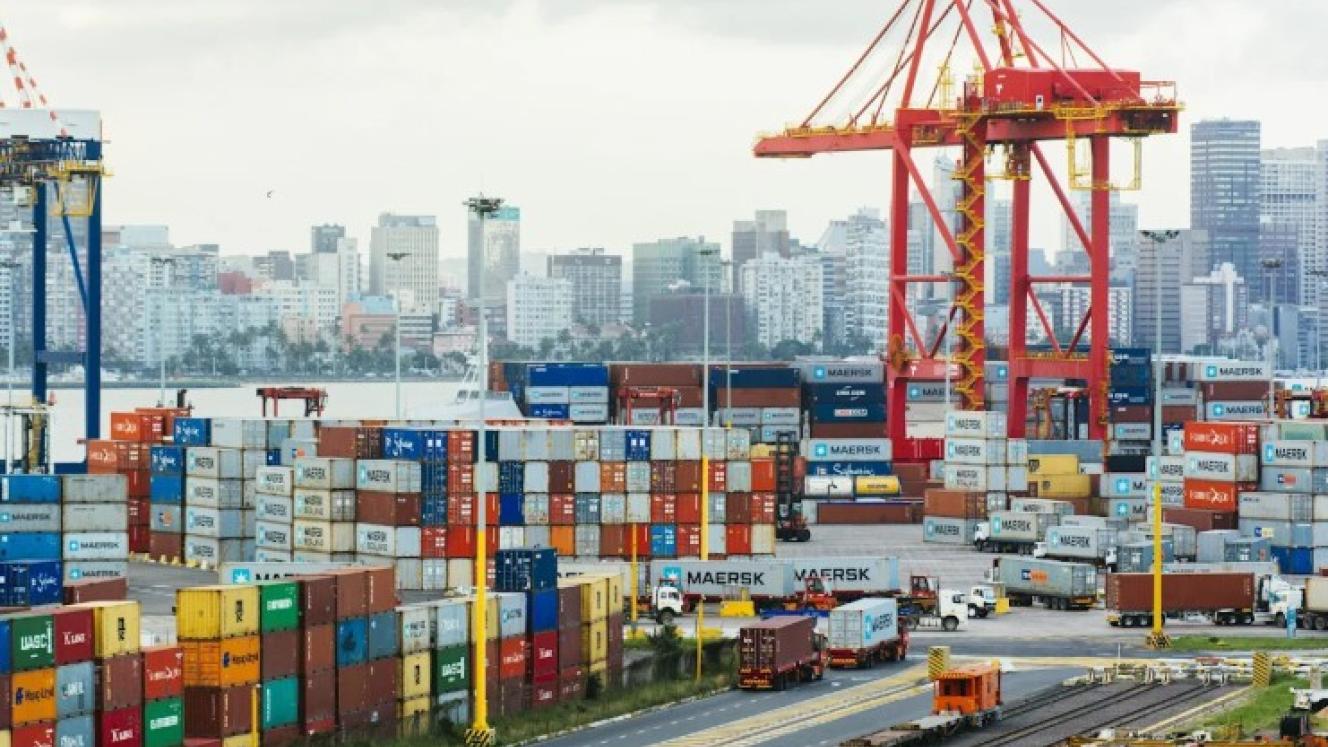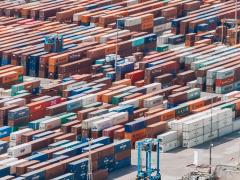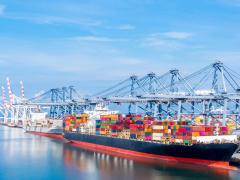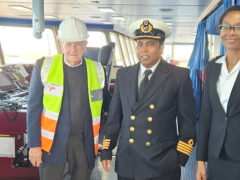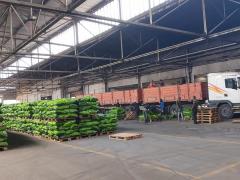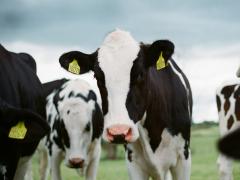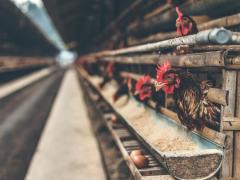Roads required to move domestic and export cargo around South Africa are fast deteriorating in some parts of the country, to the extent that transport – responsible for about 80% of movable cargo – is becoming increasingly difficult.
Nowhere is this more evident than in Viljoenskroon where dry bulk carriers are pounding to dust what remains of the small Free State town’s dilapidated roads.
Reitz Street, running past system 232, one of the big grain-link silos owned by Senwes, is in such a bad state that if you don’t watch where you’re going, you’ll lose a tyre – or worse.
With the R59 from Vredefort flooded by rain, bulkers have only Reitz Street to access 232 and its sister silos, 266 at the bottom end of Fortuna Street.
In the morning mist and general gravel condition of Reitz Street, it’s a bit of a dice with the devil to drive around on the outskirts of what some might say has become a God-forsaken town.
Viljoenskroon, though, deserves more than just its fair share of recognition.
Senwes Grainlink handles approximately 25% of South Africa's total grain harvest, with a storage capacity of 6.5 million tonnes, most of it held in Viljoenskroon.
Last week, during the Nampo Harvest Day expo, a local business person told Freight News that Viljoenskroon’s silos were responsible for up to 80% of the country’s export grain, although this could not be confirmed.
Nevertheless, if you look at the size of the silos and the amount of bulkers rumbling back and forth, one wonders why the micro economy of Viljoenskroon doesn’t reflect this progress.
More importantly, why are the roads in South Africa’s grain basket province, including regional byways, going to ruin?
Ahead of this weekend’s annual conference by the Road Freight Association (RFA), chief executive Gavin Kelly said: “The association takes note of comments from various sectors in the country, not only the mining but also the agricultural sector, about the state of roads in South Africa (*).
“The roads that are affected are not only the national routes that people see a fair amount of trucks on. It’s also the regional and secondary routes around the country, especially in the case of agriculture, where food is moved from production centres, farms, manufacturing centres, large dairies and food-processing plants, to the various consumers, whether they are large retailers or distribution centres serving the export market.”
Kelly said what was especially concerning was that, while some regional and municipal budgets reported under-funding, others reported surplus money meant for the upkeep and repair of necessary road infrastructure.
“It raises a fair number of concerns, and linked to that is the role the South African railways system plays or doesn’t play.”
It begs the question of how Transnet was truly going to bring about change in how freight was moved in the country, said Kelly.
“There have been a number of reports about roads feeding large silos becoming impassable, where trucks reroute through small towns, where roads were never built to take trucks of any size.
“These roads were built many years ago and are now beginning to crack and disappear under the amount of traffic and strain.
“We as a country are going to have to resolve these challenges sooner than later.”
Kelly stressed that the only dependable logistics system at the moment was road freight. “It is soon going to be faced with challenges that could put it at a state where it can’t operate.”
If push comes to shove, increased tariffs will be required to fund road works.
“The RFA calls on all authorities and officials at local and regional levels to address these challenges in our road network,” said Kelly.
- Follow our upcoming coverage about this weekend's RFA Conference, only in Freight News.
